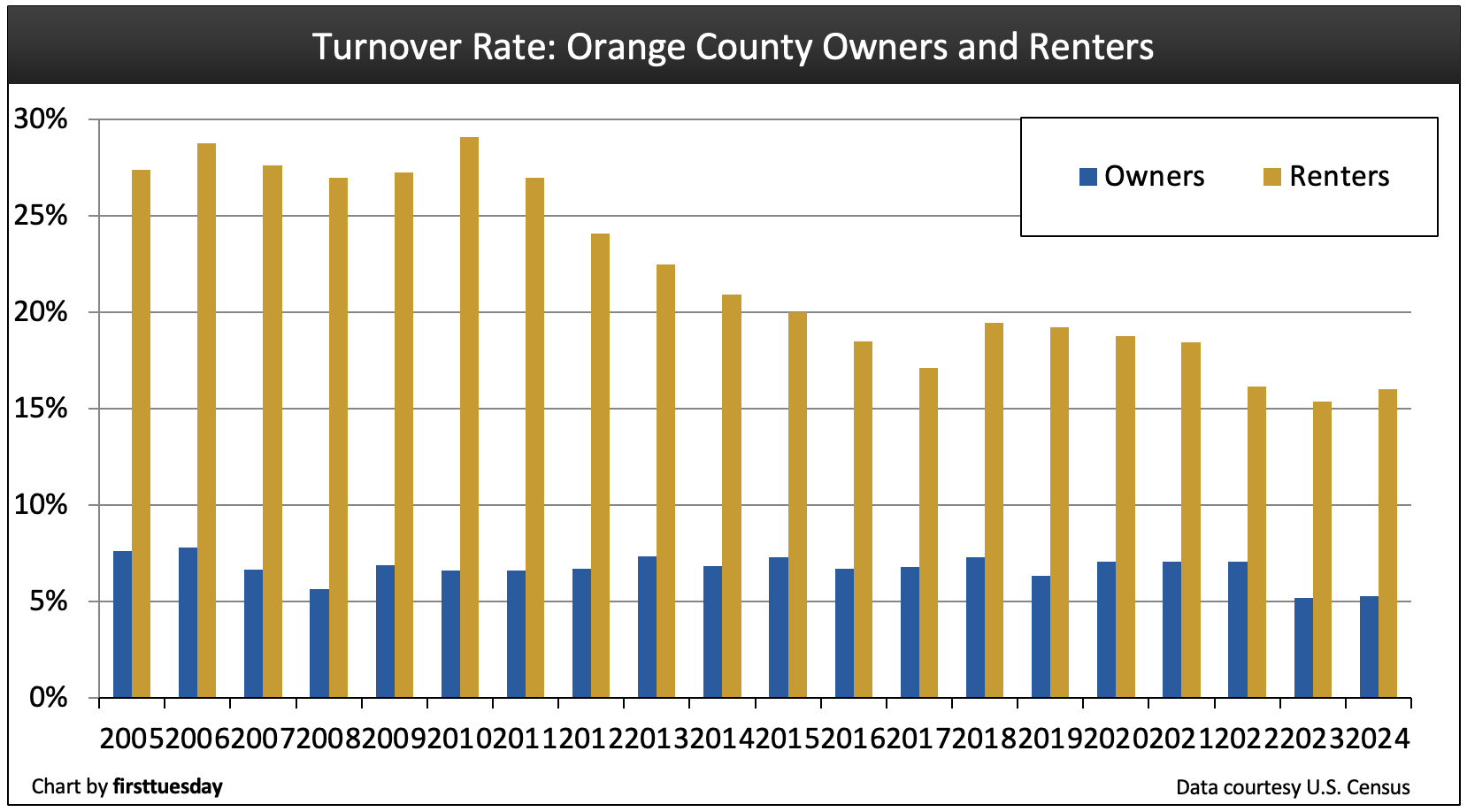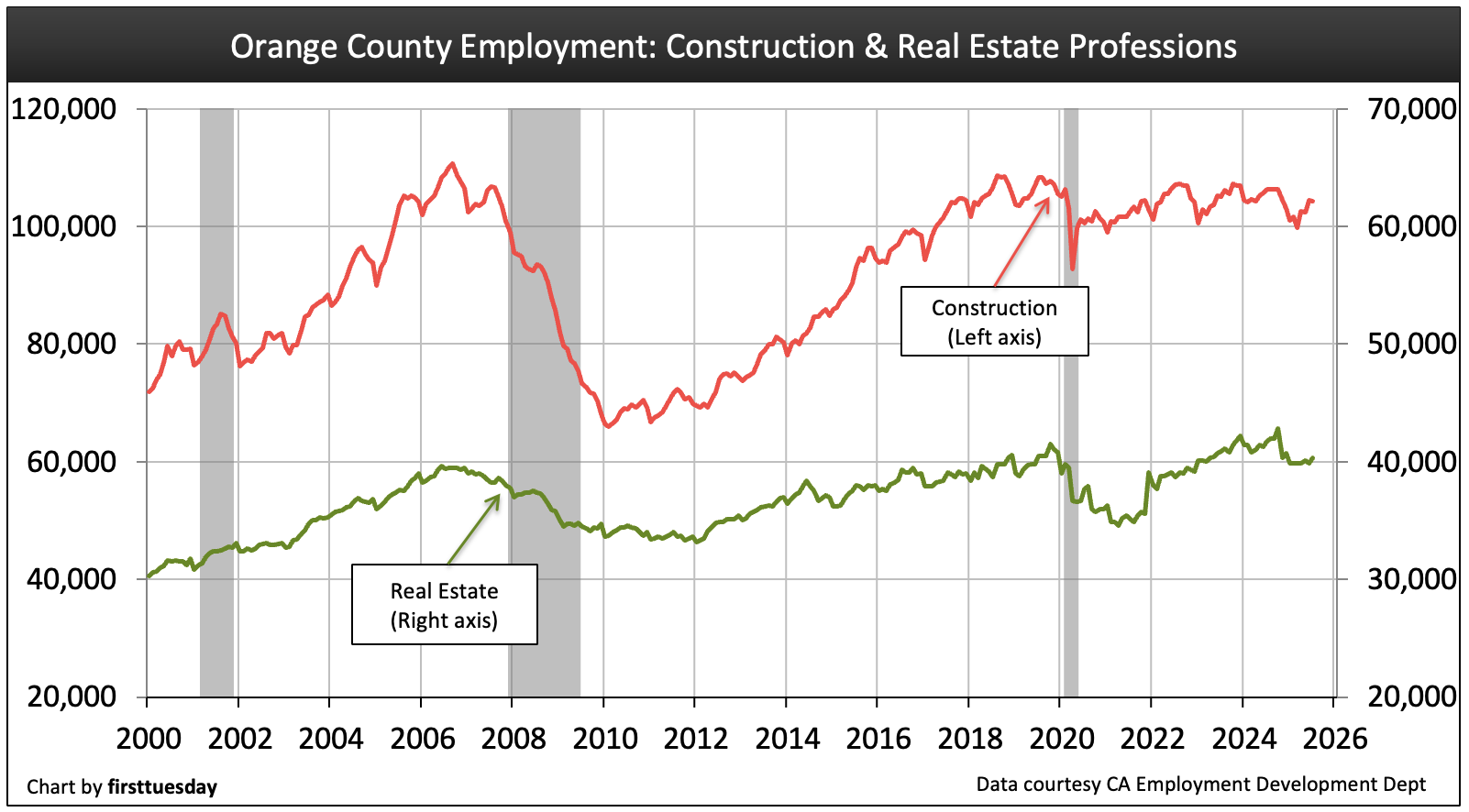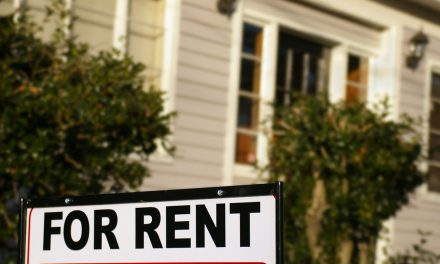As California’s housing market exits the chaotic pandemic economy in 2025, it is important to note Orange County’s housing market never fully recovered from the 2008 recession. Home sales volume remained low throughout the elongated recovery of the 2010’s, as did job creation. Residential construction of all types continues to struggle in this region, disabling willing homebuyers and directly pushing all real estate pricing into bubble territory during the past ten years.
The pandemic economy of 2020-2021 briefly distorted sales transactions, inflating both sales volume and pricing of sales and rentals of all types of property until mid-2022. Mortgage rates were set at historic lows during the pandemic period as the Federal Reserve stepped up to fund the entire mortgage-backed bond market as the lender of last resort when Wall Street froze financially.
The readily abundant low-cost mortgage funds were rocket fuel for home sales volume – and prices – until the pandemic economy abruptly ended. By early 2022, mortgage rates doubled from the prior year as funding returned to the private Wall Street bond market managers.
But low mortgage rates and fast rising prices in 2020 and 2021 did not induce homeowners to sell in light of pandemic-era job losses and extensive uncertainty about the economy. A legitimate caution swept through the county’s homeowners out of concern for finding a replacement home causing turnover of ownership and tenancies to dwindle, which in turn caused new home construction to lag badly.
The lack of ownership turnover resulted in a strangled MLS inventory to accelerate property prices to even greater unsustainable heights. In 2025, the low level of inventory is gradually building, while buyer demand is flat at best. This current trend and the current economic policy now deeply rooted in worldwide confusion, suggests prices in the next couple of years are likely to drop. Every year, real estate sales volume and prices peak and decline as part of the cyclical spring buying season.
Going forward, expect sales volume in all types of property to continue to slip annually, the trend in sales volume after the peak in mid-2022. Declining prices will likely bottom next around 2027 or 2028, brought on by the initial arrival of speculators and investors to provide a short-term pick up in sales volume and a price bump. Prices start to rise consistently over several months when buyer-occupants sense a pricing bottom has set in and they return to buy, as they do in every recovery period.
Mortgage rates are expected to trend upward in the decade ahead. However, a rise in cost of mortgage money puts downward pressure on prices for all types of property. After several months delay, home sales volume runs in tandem with the pace of price decline experienced when mortgage rates remain high and trend higher. Today, mortgage rates are roughly double the mortgage rates in 2013, at the point the 60-year cycle of interest rates hit its zero lower bound level.
View the Orange County regional charts below for details on current activity and forecasts for its local housing market.
Updated August 29, 2025. Original copy posted March 2013.
Home sales volume dips

Chart update 12/01/25
| 2024 | 2023 | 2019 | 2003: Peak Year | |
| Orange County home sales volume | 21,300 | 20,000 | 29,700 | 53,900 |
Home sales volume in Orange County, now seriously weakened by the post-pandemic economic fallout, is presently stuck at just over half the heights seen during the post Great Recession period of 2008. Echoing statewide trends, Orange County experienced a typical decrease in total home sales volume in 2018-2019 as the recovery started to lose momentum. But in 2020, home sales volume instantly reversed course with the fiscal and monetary stimulus required for businesses and individuals to work their way through the pandemic period. 2021 ended with a significant 17% increase in home sales volume over a year earlier.
But the rising action of the past pandemic years ended with a sales volume crash in 2023. In total, 20% fewer sales closed escrow in Orange County during 2023 compared to 2022. In 2023 33% fewer sales closed than during 2019 (the last “normal” year for sales volume).
Dragged down by the double whammy of rapidly rising mortgage rates and fast rising property prices, homebuyer enthusiasm waned significantly. Today, sales volume is trending flat with a downward influence for 2025-2026. Compared to the last “normal” year for home sales volume, 2024 was 28% below 2019.
That said, home sales volume for 2024 inched up 6.4% above 2023. Year-to-date, 2025 is roughly level with 2024 as of October 2025. Until builders get sufficiently incentivized to build SFRs at an increased rate in multiple housing developments, sales volume is likely to remain mostly flat.
For some historical context, 2009-2010 Orange County sales volume rose slightly with the introduction of the housing tax credit for 12 months, falling back in 2011 for lack of end user demand. From the latter half of 2012 through most of 2013, speculator hyper-activity bumped sales volume artificially yet again, as it did in all of California. The speculator buying wave receded and sales volume slumped in 2016-2019.
A complete recovery with annual sales volume of around 46,000 in Orange County will be reached only after end user demand is buttressed by labor force participation and normalized ratios of those employed. Expect a 2027-2028 recovery period from the California real estate recession that commenced in 2022.
Related article:
The Fed bumps up rates again — the undeclared recession is here
Inventory climbs

Chart update 3/24/25
| Dec 2024 | Dec 2023 | Annual change | |
| LA-OC County for-sale inventory | 16,500 | 12,900 | +28% |
Inventory of homes available for sale has risen from the historic low reached at the end of 2021. After plateauing in 2023, for-sale inventory during 2024 in the Los Angeles-Orange metro areas averaged an increase of 28% more properties over 2023. However, today’s inventory being lower than pre-2020 is not due to an overabundance of buyers.
Rather than increased buyer demand for ownership, it is owner reluctance to sell that’s holding back the present growth in inventory for sale sufficient to keep prices from rising. The winter months typically see the lowest inventory of homes for sale, peaking around mid-year as the cyclical return of buyers takes place.
Looking forward, expect for sale inventory to be higher by end of 2025. As for-sale inventories grow, extending the average length of time on the market, sellers are forced to reduce pricing to bring mortgage-funded homebuyers back to the broker offices to acquire property.
The Fed’s fight to reduce consumer inflation while maintaining current employment levels is progressing irregularly. These indicators point to a continuing downturn in the housing market activity until the 2027-2028 period. The seller’s market since 2013 fully reversed by mid-2022 and continues. The process of the shift from a seller market to a buyer market was introduced by the beginning of a roughly 30-year half cycle of generally rising interest rates. Today, homebuyers increasingly take a wait-and-see approach to buying as they become more aware of the market conditions for future price reduction.
Low turnover rate to continue

Chart update 12/05/25
| 2024 | 2023 | 2022 | |
| Orange County homeowner turnover rate | 5.3% | 5.2% | 7.1% |
Orange County renter turnover rate | 16.0% | 15.4% | 16.2% |
Without ownership and tenancy turnover, homes do not sell. The homeowner turnover rate in Orange County remained mostly level during the recovery period, at 7.1% in 2022. However, in 2023, homeownership turnover dropped to 5.2%, a difference of average homeowners selling every 14 years versus every 20 years. Increased mortgage rates caused most of this attitude shift as homeowners with a low rate mortgage found selling and acquiring an upgrade was too expensive. The general economy was also triggering caution about taking on debt.
The renter turnover rate generally declined since 2010, running at 16% of all residential tenants in 2024, the most recently reported Census year. Tenant turnover behavior indicates they are increasingly content with their living quarters. Great for landlords as vacancy rates decline and operating costs are reduced; not good for agents dependent on leasing or sales fees. Builders are forced to build and sell housing at reduced price levels to maintain momentum
Expect a consistent increase in the frequency of turnover to arrive in 2027-2028. Legislative efforts to force cities and counties to greatly increase the permitting of residential construction will eventually increase housing starts. Further, after we pass through the remainder of the current real estate recession, which started in mid-2022 and persists in 2025 and likely to continue into 2027, Orange County will experience an economic recovery for real estate sales and leasing transactions for all types of property.
This upturn will also be fueled by a Great Convergence of first-time homebuyers (Millennials and members of Generation Z forming households), retiring Boomers buying replacement homes and increased for-sale inventory generated primarily by construction starts. Short sales and REO resales due to mortgage defaults will be in the mix as job losses and mortgage forbearance agreements resets appear in 2025 and 2026. Domestic and international emigrants will continue to play a significantly enhanced role in the county’s periphery housing — the suburbs. Those who come do bring sufficient wealth with them to fit into the Orange County economy.
Homeownership remains low

Chart update 3/24/25
| 2023 | 2022 | 2021 | |
| Orange County homeownership | 58.1% | 56.4% | 57.3% |
Orange County’s homeownership rate has fallen since its 2007 peak of 62.7%. The most recent homeownership data shows a 58.1% homeownership rate in Orange County. Statewide homeownership has historically been about two percentage points below Orange County’s. The state average is currently 55.5% at the end of 2024, thus homeownership reports in Orange County in 2024 likely remains around 57%-58%.
Expect Orange County’s homeownership rate to remain near its present low level until around 2027, maybe 2028. By the 2027-2028 period, the housing market will begin to bounce back from the current real estate recession. A loss of jobs is expected through the 2026 period. Then, you will see a return of jobs, higher wages and increased confidence, and the first-time homebuyer population will gain homebuying traction.
However, don’t expect the rate of homeownership to fully return to the inflated heights seen in 2007 anytime soon. This rate was elevated by unfettered access to easy money, which mortgage regulators tamped down in 2010 with enforcement of ability-to-pay (ATR) rules to protect society from destabilizing types of mortgage lending. These rules limit mortgage funding to those homebuyers with the financial capacity to actually repay their debts in recessions.
Thus, the housing market won’t see a repeat of those Millennium Boom homebuyers who lacked the income needed to support the types of purchase-assist mortgages many took out. Though this translates to a slightly lower homeownership rate in the near term, it fosters a more stable future housing market in Orange County and the state. The pattern of the first time homebuying generation remaining in rentals for longer periods of time before buying a home than in past generations also puts a cap on future home sales volume.
Construction starts fall back due to shortages

Chart update 08/26/25
| 2024 | 2023 | 2022 | |
| Orange County single family residential (SFR) starts | 3,000 | 2,900 | 2,900 |
Orange County multi-family starts | 4,700 | 3,500 | 3,100 |
After years of decreased single family residential (SFR) and multi-family construction starts since 2018, with a temporary pandemic bump in starts during 2021, 2024 saw an increase across both SFR and multi-family construction starts.
Multi-family starts in Orange County totaled 4,700 in 2024, up 35% from the previous year. SFR starts were up 30% in 2024. 2024 construction starts are partly the result of increased confidence in the Orange County economy from lenders and builders.
The next peak in multi-family and SFR construction starts will likely occur in the post-2026-2027 period due to a boost from recent state legislation. Even then, SFR starts are unlikely to return to the mortgage-driven numbers seen during the hyperactive Millennium Boom.
Jobs are recovering, too slowly

Chart update 08/29/25
| Jul 2025 | Jul 2024 | annual change | |
| Orange County jobs | 1,688,800 | 1,703,600 | -0.9% |
Orange County has recovered the historic job losses of 2020, but barely, and it’s been five years since the pandemic hit Orange County. However, the number of jobs is stagnant with no growth in sight as of July 2025, at 0.9% below one year earlier. Now, compared to the pre-pandemic peak, Orange County is actually 6,900 jobs below the number of jobs held prior to the 2020 recession.
Orange County was on course to return to pre-recession levels in 2020, but the 2020 recession arrived causing significant job losses in the region. Expect a W-shaped recession pattern in the coming months, with jobs continuing to bounce in starts and stops – or stops and starts – not to enter a recovery pattern until the undeclared real estate recession beginning in 2022 is behind us.
Jobs in the real estate industry

Chart update 08/29/25
| Jul 2025 | Jul 2024 | annual change | |
Construction | 104,300 | 106,400 | -2.0% |
Real Estate | 40,300 | 41,700 | -3.4% |
2020 job losses have nearly been recovered in California’s real estate and construction industries. However, the number of individuals employed in both the real estate and construction industries has decreased in the past 12 months. Caution about anything real estate is on the minds of a constantly increasing percentage of Californians.
Over the next several years, Construction jobs are more likely to rise. State legislation and the OAG have been and are aggressively focused on adding more housing inventory. The an improved set of rules for consumer representation by real estate agents applicable primarily to metropolitan areas of California – coastal and near inland valleys will foster better relationships with buyers. The real estate industry will see jobs appreciably increase beginning in 2027 (maybe 2028) energizing the housing market’s recovery from the 2022 real estate recession.
Per capita income plays catch up

Chart update 3/24/25
| 2023 | 2022 | Annual change | |
| Orange County per capita income | $88,900 | $84,100 | +5.7% |
| California per capita income | $81,300 | $76,900 | +5.6% |
The average income earner in Orange County made $88,900 in 2023 (the most recently reported data from the Bureau of Economic Analysis).
Sustainable home price increases are limited to a ceiling set by personal income, the annual rate of increase from 2022 to 2023 in this region being 5.7%. Buyer and tenants are only able to pay what their incomes allow them to. However, the annual income increase was given further fuel by record-low interest rates, which caused buyer purchasing power to jump in 2020-2021. Yet, as interest rates reverse course in 2022 and now are plateaued at a higher level, buyer purchasing power is fast losing steam, relegating homebuyers to rely on income increases alone.
Home sales will soon stand on their own absent the government support of 2020-2021 received in the form of cash stimulus and artificially-low mortgage rates. Thus, going forward, real estate price increases will remain minimal until an optimal employment level is attained and maintained.
Through the fog of international trade chaos, look to 2027-2028 for the next significant increase in home sales volume and prices. If the world trade issues remain in conflict throughout 2025, we will most likely see job losses and thus forced sales to avoid foreclosures for lack of personal income.
The next recovery period will be driven by the shifting demographic trends of retiring Baby Boomers and their Millennial and Gen Z counterparts who will become homebuyers en masse following the next recession.















Great presentation, but how do the numbers play under our new Covid19 environment?
Curious if the slow down in China is factored into these numbers. There are huge swaths of Irvine that are nearly 100% Chinese nationals purchasing with cash. The slow down in China (along with the Russian sanctions), have already caused a huge price drop and slow down in NY City’s apartment sales. Not that I expect Irvine to suffer in the same way as NY City, but I would think it would shave a point or two off these projections. Irvine has been a huge factor in new and existing home sales for some time now. Any effect in that market would have an out sized effect on Orange County’s numbers overall.
Great charts and information.
We’ve had modest rises in home price appreciation so far. Jobs are strong, demand is strong. No crash coming as borrowers aren’t buying with fake income like back in 2007. It is verified.
Orange County market is going to see a big crash and minimum 30% drop in value in 2017. It will become a buyer’s market as it was in 2010. Builders are building and property owners are selling higher than the new homes sales! It is time for a big change.
Orange County will remain a heavily demanded destination for home buyers. There is not going to be any drop in prices or increases in inventory. Where else are Orange County residents going to move and have the same benefits, nowhere. Also, the boomers are retiring and are going to have the freedom to enjoy more fully all the amenities available to them this location offers. My tenants are asking for multi-year leases, the first time since the recovery and so far I am keeping them at 1 year only. My advice if you are in the market to purchase grab something and lock in the still historically low interest rates available now.
I hope it crashes and burns to the ground. After it does, im coming in strong and buying! Brun baby, burn!!!
Azar = wrong
$1,000,000 house in Orange County will drop to $700,000? Ok AZAR time to take your medication…
Turnover rates are likely to rise dramatically in the convergent 2019-2021 boomlet period raising rental vacancy rates. Then, members of Generation Y (Gen Y) will collectively first rush to buy but since their income and job security is considerably low they end up renting and housing market is going to crash sometimes between 2017-2020.
This author is using a lot of definitive verbiage on the future. As an example, “Sales volume will bottom again in 2017 before rising continuously into 2019-2020.” Shouldn’t the word “likely” be in there somewhere, since the author is making a prediction based upon a range of possible outcomes and the future is inherently uncertain?
Sam it’s. Common for analysts to use definitive language. It strengthens their prediction by showing they fully believe it and are not riding the fence by saying what it might do.
this article is post 2015…. yet above comments were make 2013?? there is research done by citi, regarding if central bank in china or Russia or Norway sell 2 trillion t bills that will make rate jump 4.4% adding current 3% to around 7.4%!!! if that happened imho…. we could c house prices 5 to 6 folds in a snap??? 2015-11
Good incos, Thank you.
Home prices aren’t limited because we have 30% cash buyers in the market with a low inventory hang over. The market is not the best indicator to correlation to DTI this time because to many cash buyers who don’t need income to buy and a major inventory crisis here
home price appreciation is limited to a ceiling set by personal income, the annual rate currently being 3.4%
Not correct. This is only one of many factors.
Housing Inventory Crisis is # 1 reason why home prices are rising. Prices are now rising faster than incomes and because CASH buyers are so prevalent it creates distortion in market prices. We will pay for this down the line. Mini Bubble 2.0 in full motion
http://loganmohtashami.com/2013/02/27/housing-inventory-hangover-will-continue-in-2013/